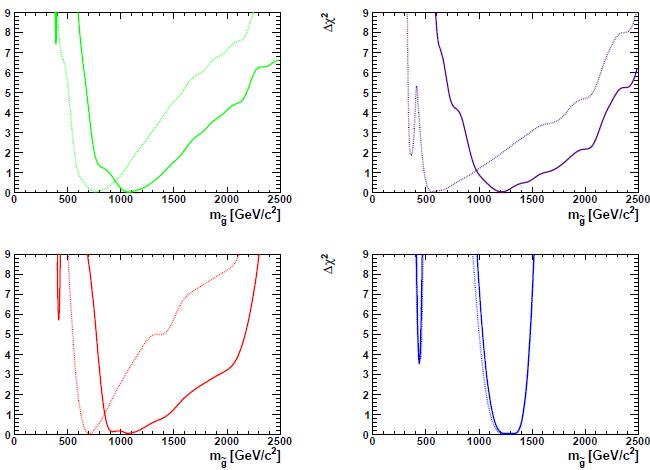Do you remember the
dijet mass bump found by CDF in W plus jets events ?
That signal, whose significance exceeded four standard deviations, had everybody around
go crazy for a while.
As a 20-year-long (ok well, 19) member of the CDF collaboration, I am very proud of this wonderful experiments' accomplishments in all areas of high-energy physics, from exotic searches to Higgs searches, from top quark measurements to b-physics measurements, and what not. CDF is a landmark in experimental physics, and the longest-lasting physics experiment ever. But it is not foulproof - nobody is in this wild world of statistical flukes and impossible-to-unearth systematic effects.
While experimentalists gathered in Grenoble present the latest results on High-Energy Physics searches and measurements, phenomenologists like Sven Heinemeyer are working 24/7 to update the picture of the breathing space left for Supersymmetry, in the light of the most recent searches.
You of course do not need to be reminded that Supersymmetry is not a theory but a framework, within which a host of possible manifestations of subnuclear physics are configurable based on the value of 120-or-so free parameters. Because of that, if one wants to discuss in detail what are the most likely versions of SUSY left on the table, and what is the value of the most representative and critical theory parameters, one needs more than paper and pencil.
In the last few days I described in some detail (
here and
here) the six searches for the Standard Model Higgs boson just produced by CMS, the experiment at the CERN Large Hadron Collider to which I proudly belong.
In my short summary of analyses recently published by CMS, yesterday I left out one which had not yet been released. It is the search for the "golden channel" of Higgs decay, the one which motivated the construction of detectors with large acceptance to energetic leptons: the decay to two Z bosons, with a subsequent decay of the Z's to two charged leptons each.
 Living At The Polar Circle
Living At The Polar Circle Conferences Good And Bad, In A Profit-Driven Society
Conferences Good And Bad, In A Profit-Driven Society USERN: 10 Years Of Non-Profit Action Supporting Science Education And Research
USERN: 10 Years Of Non-Profit Action Supporting Science Education And Research Baby Steps In The Reinforcement Learning World
Baby Steps In The Reinforcement Learning World









